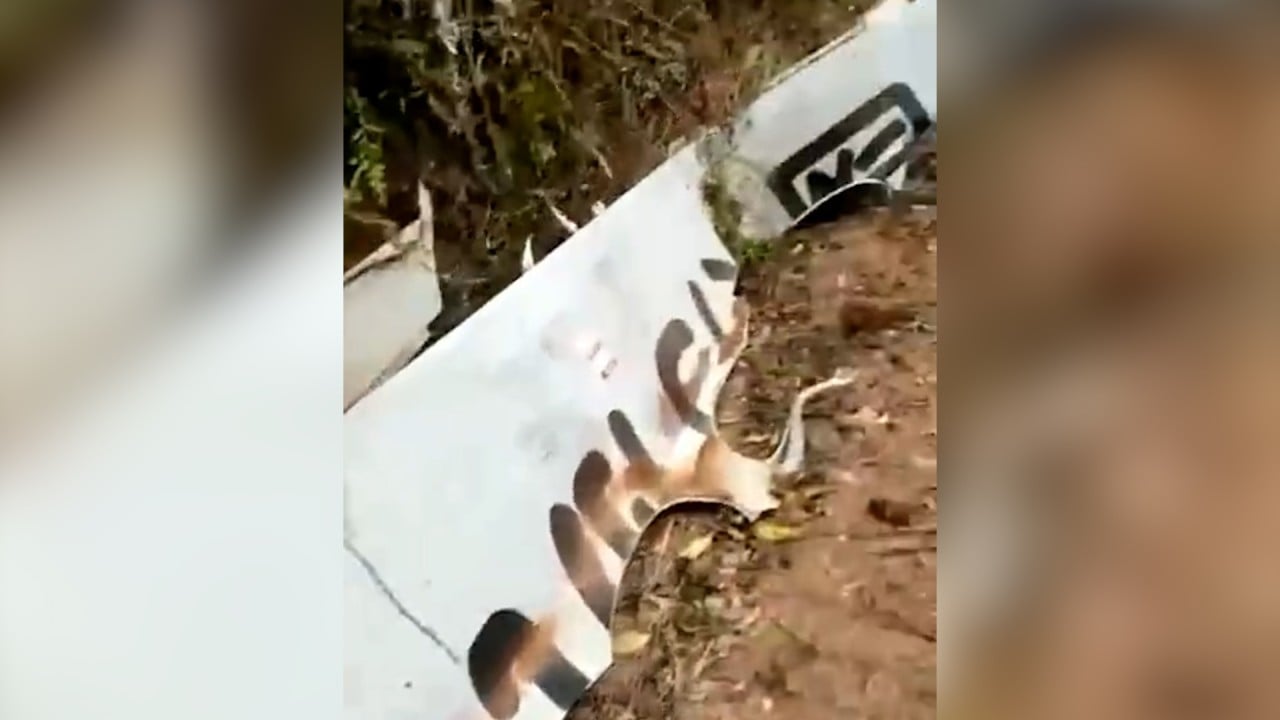
China Eastern Airlines Flight MU5735: air safety experts study video and flight data in search of crash clues
- The plane descended at over 9,000 metres per minute in the last few seconds before it crashed, according to data captured by Flightradar24
- It is ‘extremely rare’ for an aircraft to end up in such a near-vertical attitude, says an aviation analyst
The chilling video captured a scene rarely recorded: a commercial airliner in a near-vertical nosedive, hurtling toward the ground at hundreds of kilometres an hour.
The footage of what appeared to be flight MU5735’s final few moments was shared widely on Chinese social media on Monday, hours after the Boeing 737-800 operated by China Eastern Airlines crashed into a forested hillside in southern Guangxi province, around an hour after taking off in neighbouring Yunnan.
Rescue teams raced to the scene, but none of the 132 people on board – 123 passengers and nine crew members – are expected to have survived the crash, making it China’s deadliest air disaster in decades.
As China’s civil aviation authority began its investigation, air safety experts were studying the video footage and flight data for clues as to what could have caused the crash and what investigators will be focused on.
“The first thing accident investigators are going to have to determine is: was the aircraft all in one piece when it hit the ground, or did something fall off the aeroplane before it hit the ground?” said Juan Browne, a Boeing 777 pilot and popular aviation vlogger who analyses air incidents. “The video data to me suggests that the aircraft was in one piece.”
Data captured by Flightradar24 showed the plane cruising at 8,900 metres (29,200 feet) at around 2.20pm local time when it suddenly began descending. After regaining some altitude briefly at around 2,000 metres, the plane then continued to dive, descending at almost 9,450 metres per minute in the last few seconds before it crashed.
It is “extremely rare” for an aircraft to end up in that near-vertical attitude, said Browne.
Jean-Paul Troadec, a former director of the French Bureau of Enquiry and Analysis for Civil Aviation Safety, told Agence France-Presse that data was “very unusual”, but stressed that it was “far too early” to draw conclusions.
Investigators have yet to announce the retrieval of the plane’s “black box” flight recorders, heavily protected equipment that records information such as aircraft performance, pilot input and cockpit audio.
They will also probably analyse the video footage, which was captured by a security camera operated by a local mining company, according to Thepaper, a Chinese online news outlet. Dashcam video purported to come from a car travelling nearby appeared to show additional footage of the crash from another angle.
As investigators examined the wreckage, they would be particularly focused on the “trim” setting on the aircraft’s elevator, the moving surfaces at the rear of the plane that control the pitch of its nose, said Browne.
Trim refers to the mechanism that keeps the elevator in a certain position without the need for sustained pilot input.
Boeing 737 MAX en route to China, first delivery in 3 years since fatal crashes
“There’s really only one thing that can get the aircraft in that vertical of a descent and keep it there, and that is the elevator or the stabiliser trim,” said Browne, noting that an aircraft would otherwise naturally pitch upwards out of a nosedive as it gathered speed and the wings generated more lift.
Even in such a “devastating impact crater”, said Browne, it is possible that investigators will be able to locate the elevator trim jackscrew – a threaded bolt that controls the position of the trim. “If you can find where the nut on the jackscrew was located, you can get an idea of what the trim state of the aircraft was on impact,” he said.
On Monday, the US Federal Aviation Authority said it was “ready to assist in investigation efforts if asked”, while Boeing said it was working with and ready to support China Eastern Airlines.
“Boeing is in contact with the US National Transportation Safety Board and our technical experts are prepared to assist with the investigation led by the Civil Aviation Administration of China,” the company said on Twitter.

After the crash, shares of Boeing and its suppliers fell, indicating another hit for the company, three years after its 737 MAX model was banned from flying passengers after crashes in 2018 and 2019 that killed 346 people.
Those accidents were attributed to new flight control software – known as the Manoeuvring Characteristics Augmentation System or MCAS – that is not used in the 737-800, a widely used aircraft with a strong safety record.
China Eastern Airlines grounded all its 737-800 aircraft after the crash, according to Chinese state media.


